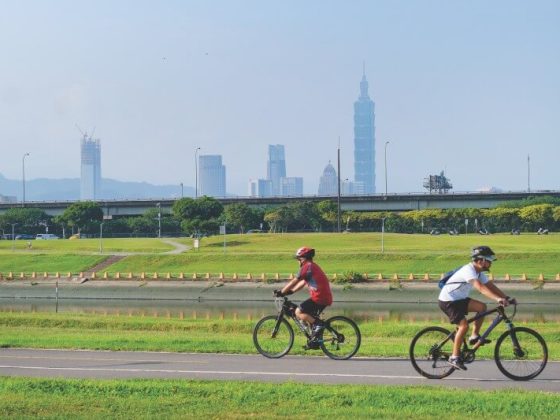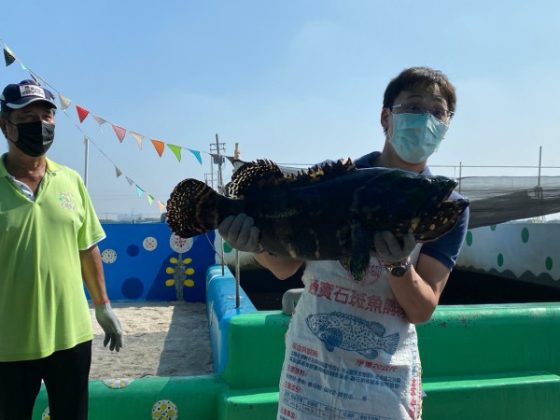Kaohsiung is a city that leaves an impression, from its sprawling flea markets to garish temples to notoriously reckless drivers. Hamasen, the historic urban area by Kaohsiung Port, in particular is full of wonderful things to do. Developed during the Japanese colonial period, this historically affluent district was once the city’s financial center and one of Taiwan’s first tourist destinations for cruise ships, drawing in hundreds of thousands of wealthy tourists at the turn of the century.
Thankfully, this nostalgic corner hasn’t succumbed to overdevelopment. And with many of its Japanese-era buildings recently restored, now is a great time to visit. Here is our guide on what to do in Hamasen, from boutiques to beaches
Sip Coffee in a 100-Year-Old Japanese Bank
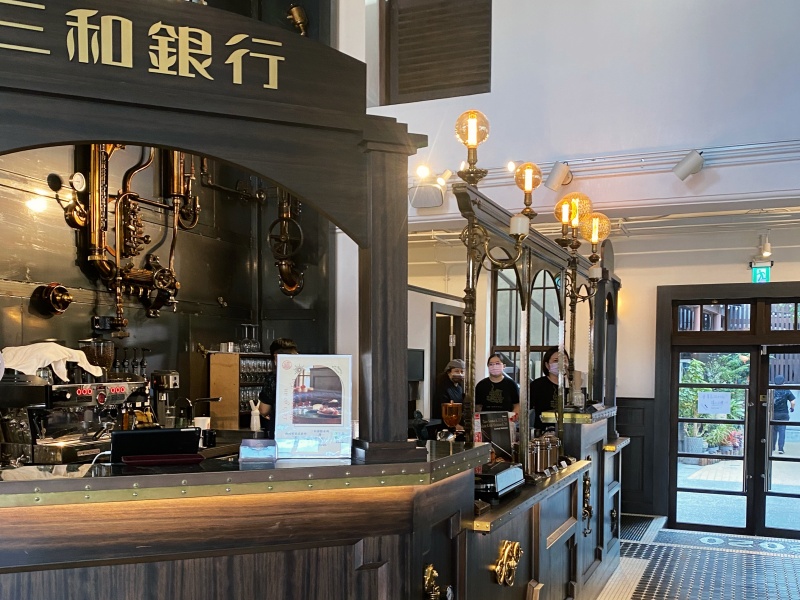
The Former Sanwa Bank was one of six financial institutions to open along Hamasen during the Japanese period, a time when the affluent district was known as Kaohsiung’s Wall Street. Later changing hands and then abandoned, the building reopened as a café in 2021, retaining much of its distinguished colonial charm. Original features, such as the granite counter have been incorporated into the café’s interior, which is dressed up in steampunk finery (think brass teller windows, frosted glass light fittings, and capillaries of copper pressure gauges climbing up the walls). Arguably most eye-catching is the former bank’s burnished metal vault floor, through which you can spy an incredibly ornate slow-drip coffee machine. Stay for a glass of Sanwa’s signature cold-brew or exquisite tea service on the bank’s upper gallery.
Explore the Wonderful Weirdness of Hamasen Railway Cultural Park
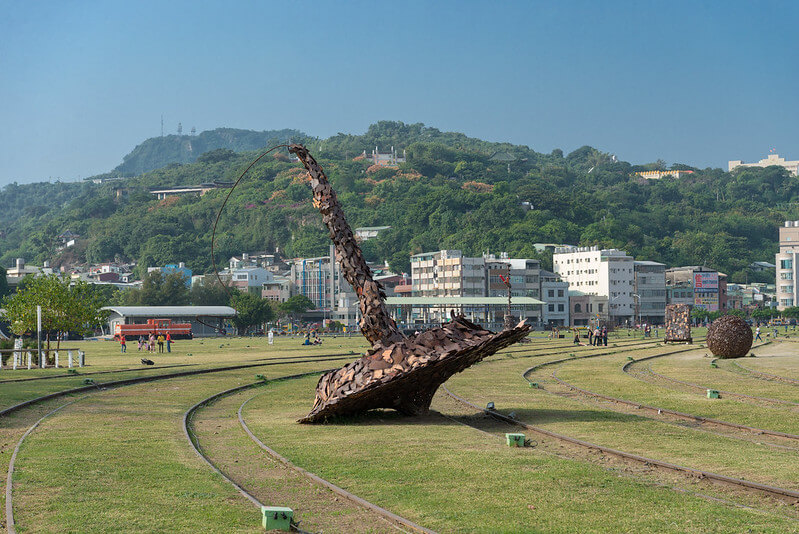
Formerly the Kaohsiung Port Railway Station, this cooky cultural park is an open-air gallery of bizarre art installations that look like they fell out of a Dali painting. We’re talking upside-down houses, giant suitcases made out of scrap metal, and arachnidy three-legged swing sets. Great for kids, here and there you’ll also find old locomotives, some of which are painted in bright pops of color. Stick around until nightfall and you’ll get to see the old railway tracks light up like candy canes in Starry Hamaxing, a light display that happens every 30 minutes between 19:00 and 21:30.
Check-In for Tea at the Haruta Hotel

Another recent restoration, this elegant Taisho-era hotel is another reminder of Hamasen’s affluent past. The Haruta Hotel sprung up during the tourism boom years to provide accommodation for the rising number of wealthy visitors that were making for the area — roughly 500,000 at its peak. There are no longer any rooms you can stay in. Instead, the building is a sort of Swiss Army knife of boutiquey experiences, set across four distinct floors. The front desk now functions as a French-Japanese patisserie, offering macarons, Magdalenes, and various tiny tarts. Upstairs, you’ll find a vintage lifestyle shop and café on the second and third floors, respectively. But the real highlight of this place is the attic, an interwar-style Japanese tearoom that stands out for its excellent shaved ice desserts and intricate wooden ceiling designed in the style of ancient Japanese temples.
Take a Kendo Class at a Real Colonial Dojo
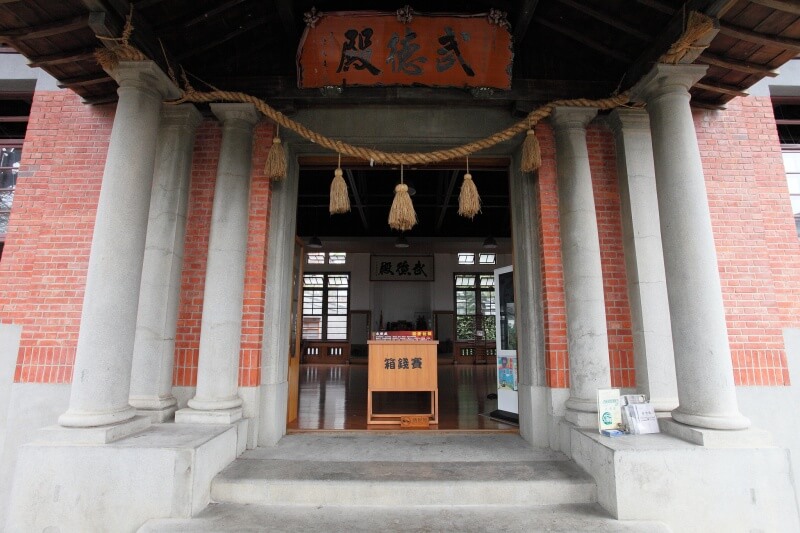
Another important reminder of Taiwan’s past, organizations like Wude Martial Arts Center emerged all over the island during the early 20th century as part of a colonial effort to Japanify the island. Wude, however, is the only center however that still functions as a center for learning martial arts like judo and kendo. When it first opened in 1924, the center mainly trained police officers and students. You can still sign up for classes today (inquiries: +886-7-5317382, have a Chinese-speaking friend call). Additionally, Wude also holds occasional cultural workshops, such as ikebana and tea ceremonies. If these don’t line up with your travel plans, still have a wander around the dojo, which is an interesting mix of Japanese and Neoclassical styles.
Hike Up to the Former British Consulate

Follow Shaochuan Street around the upper lip of Kaohsiung Harbor to find this elegant 19th-century landmark. The British built their vaguely Mediterranean-looking consulate in 1865 to control trade coming in and out of Kaohsiung after they prized the city open to foreign trade at the end of the Second Opium War. It now houses a small museum – and of course – a tea room.
Head up before sunset to catch splendid evening views over the harbor mouth. During the day, you can also continue along the path behind the consulate to reach Shoushan Mountain via Chaishan hiking trail, home to a large population of Formosan macaques. Nearby is 18th-century Lingsing Temple, which venerates 18 incredibly unlucky sailors who were mistaken for pirates and executed after they were shipwrecked in the area.
Kick Back on Sizihwan
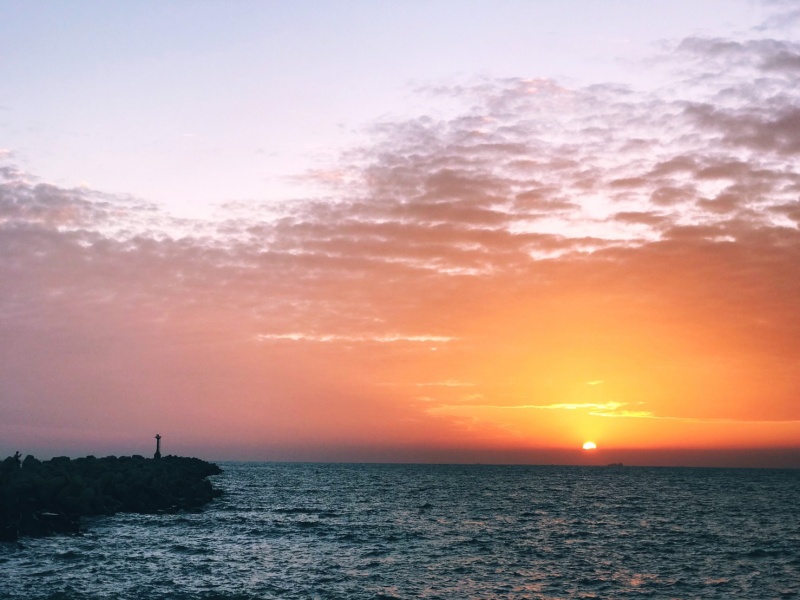
Given that it’s Taiwan’s second-largest city, you would certainly think that Kaohsiung is more than a proverbial stone’s throw away from a decent beach. Amazingly though, that’s not the case. Sizihwan, a swathe of black sand is only about a 10-minute walk from the old quarter. Reachable as it is via a walking tunnel that bores under Shoushan from Hamasen’s Linhai Road. You can swim here, and the sea temperature is warm most of the year around.
Sizihwan is the easiest beach to reach from Hamasen. But if you have a few hours to kill, follow Chaishan Avenue north for about an hour until you reach the Corner Café (海角咖啡). You’ll find a secret beach with narrow caves and gorgeous views along the cape.
Scoff Down Literal Buckets of Shaved Ice
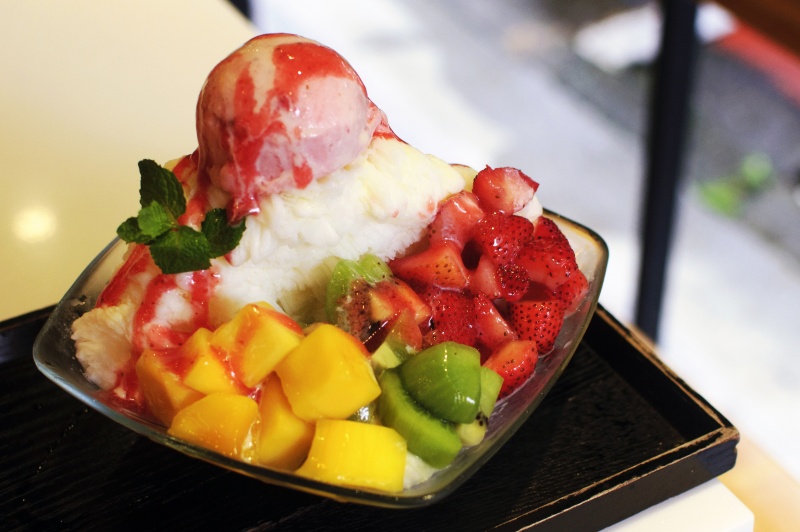
Ask any Kaohsiunger where to get the frozen treat and they’ll point you in Hamasen’s direction. The district’s frozen connection goes back to the colonial period when the Japanese used shaved ice to refrigerate their catches. It’s not clear when it went from method of refrigeration to delicious summer dessert. But you’ll find a number of specialist shops in the area, particularly around the intersection of Yanping and Binhai streets. If you’re not sure where to dig in try Haizhibing (海之冰), a garish yellow store known for its seriously large servings, suitable for up to 10 people a bowl.


